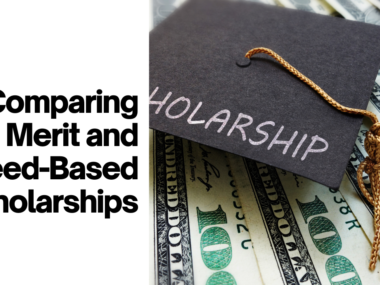Introduction
The ever-rising cost of college education has placed a significant burden on students and families. Scholarships play a vital role in bridging this financial gap, but the traditional application process often involves lengthy essays, requiring strong writing skills and significant time investment. This can be a barrier for students who may excel in other areas or lack the confidence and resources to create compelling essays.
Imagine standing beneath a shimmering waterfall of financial aid, eager to catch a droplet that will propel you toward your college dreams. But the current is fierce, churning with essays – some students glide effortlessly through, their eloquent prose a life raft.
Others, however, struggle against the current, their writing skills not as polished, their voices perhaps quieter. This traditional scholarship landscape often favors those with a knack for crafting compelling narratives, leaving some deserving students gasping for air.
Enter the no-essay scholarship: a lifeline thrown across the churning waters. These scholarships, devoid of the essay requirement, offer a new gateway to higher education. No longer is the ability to spin a captivating yarn the sole criterion for financial support.
But is this a democratizing force, a beacon of inclusivity, or are there hidden currents lurking beneath the seemingly calm surface? This exploration delves into the world of no-essay scholarships, examining their impact on college accessibility, their potential pitfalls, and how they fit within the broader landscape of financial aid.
We’ll navigate the benefits of a simplified application process, and the challenges of finding the right “fit” without essays, and explore alternative strategies that, alongside no-essay scholarships, can create a truly accessible path to college for all.
What are No-Essay Scholarships?
No-essay scholarships, as the name suggests, are scholarships awarded without requiring an essay component in the application process. Selection criteria typically involve factors like GPA, extracurricular activities, test scores (though these are becoming less common), demographics, or participation in specific programs. These scholarships aim to streamline the application process and offer opportunities to students who might struggle with traditional essay-based applications.
The Rise in Popularity of No-Essay Scholarships
No-essay scholarships have seen a surge in popularity in recent years. This can be attributed to several factors:
Increased Application Accessibility: Removing the essay barrier opens doors for students who may be strong candidates but lack writing proficiency or time to dedicate to lengthy essays.
Reduced Application Burden: With the rising number of scholarship opportunities, students often apply to a multitude of programs. No-essay scholarships lessen the overall workload and allow students to cast a wider net.
Focus on Diverse Criteria: By eliminating the essay, these scholarships can cast a wider net and potentially identify deserving students who excel in areas beyond writing skills.
Pros of No-Essay Scholarships
Increased Accessibility: No-essay scholarships break down barriers for students who might struggle with traditional application formats.
Reduced Time Commitment: The streamlined process allows students to apply for more scholarships, potentially increasing their chances of receiving financial aid.
Focus on Well-Rounded Applicants: By not solely relying on essays, these scholarships can identify students who excel in areas like extracurricular activities, leadership roles, or community service.
Cons of No-Essay Scholarships
Selection Challenges: With a larger applicant pool and lack of essays, it can be challenging to assess a student’s full potential and motivations.
Potential for “Gaming the System”: Students might prioritize applying to a high volume of no-essay scholarships rather than focusing on programs that align with their academic or career goals.
Devaluing Soft Skills: The absence of essays might downplay crucial soft skills like communication, critical thinking, and storytelling, which are valuable in both academic and professional settings.
How No-Essay Scholarships Affect College Accessibility
The impact of no-essay scholarships on college accessibility is multifaceted:
Positive Impact: These scholarships provide opportunities to students who might not have the writing skills or confidence to compete in traditional scholarship programs. This can be particularly beneficial for students from low-income backgrounds or those with learning differences that may hinder essay writing.
Potential Drawbacks: With a larger applicant pool, no-essay scholarships might become more competitive, potentially making it harder for deserving students to stand out. Additionally, a focus solely on objective criteria might overlook students with strong potential who lack a high GPA or standardized test scores.
Alternatives for Increasing College Accessibility
While no-essay scholarships offer advantages, a comprehensive approach is necessary to truly increase college accessibility. Here are some alternative solutions:
- Mentorship Programs: Pairing students with mentors who can guide them through the college application process, including essay writing, can be immensely helpful.
- Financial Aid Literacy Programs: Educating students and families about financial aid options, including scholarships, grants, and work-study programs, empowers them to make informed financial decisions.
- Need-Based Aid: Increasing the availability of need-based financial aid ensures that students from all economic backgrounds have a fair shot at attending college.
- Standardized Testing Reform: Moving away from standardized tests as a sole admissions criterion allows for a more holistic evaluation of student potential.
Conclusion
No-essay scholarships are a valuable tool in expanding access to higher education. By removing the essay barrier, they provide opportunities to students who might otherwise be left behind. However, it’s important to acknowledge their limitations and utilize them as part of a broader strategy to ensure college affordability and accessibility for all students.
Frequently Asked Questions
- Are no-essay scholarships legitimate? Yes, many reputable organizations offer no-essay scholarships. Be wary of scams that ask for application fees or personal financial information.
- How do I find no-essay scholarships? There are many online resources dedicated to listing no-essay scholarships. You can also check with your school counselor, local scholarship foundations, and professional organizations related to your field of study.
- Should I only apply to no-essay scholarships? No. No-essay scholarships are a great option, but you should also consider applying to traditional essay-based scholarships. These scholarships might offer larger awards and allow you to showcase your writing skills and passion for a particular field.
- How can I improve my chances of winning a no-essay scholarship? First, ensure you meet the eligibility criteria. Next, strengthen your overall application by highlighting your academic achievements, extracurricular activities, awards, and community service involvement. A strong transcript and an impressive extracurricular record can significantly boost your chances of standing out, even without an essay.






